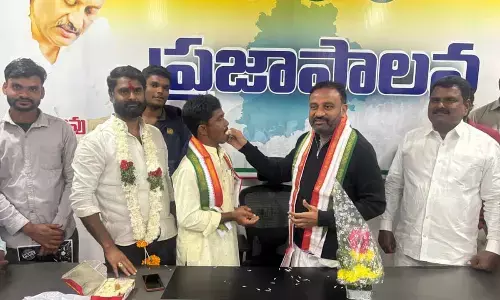A true son of soil, who met India’s food needs

A beacon of hope and innovation and Father of India’s Green Revolution, Dr Monkombu Sambasivan Swaminathan, who had reshaped the nation’s agricultural landscape, died on Thursday at a ripe age of 98. Unlike many, he was not a scientist who would give out theories but a man who would muddy his shoes in farm fields and strain his eyes in laboratories as a young scientist.
Beginning his career as an administrator in the Indian Police Service (IPS), Swaminathan was interested in agriculture foremost, and at the same time, an opportunity for him arose in the agriculture field in the form of a UNESCO fellowship in Genetics in the Netherlands and soon he moved to pursuing research in the field. He played a major role in the set of changes introduced in farming in the 1960s and ‘70s that helped India achieve food security.
I had the privilege of personally meeting him as a student and heard some of his lectures on agriculture at various seminars as a budding reporter. He had set an enduring example of scientific excellence and dedication to fighting food scarcity and reshaping nation’s agricultural landscape. He championed the introduction of high-yielding crop varieties.
A true visionary, he came to the rescue of the country when it was grappling with food scarcity and averted potential famines. His vison resulted in the elevating economic conditions of farm community. He delighted in rebuking the Malthusian projections that low yields and high population growth would produce mass starvation in India. He used to recall, “Many books were published by doomsday experts who said Indians had no future unless a thermonuclear bomb kills them. Another group of experts said Indians would die like sheep going to the slaughterhouse. But we decided this would not happen.”
Recognising the need for a holistic approach, he worked tirelessly to develop wheat and rice varieties that were not only high-yielding but also disease-resistant and well-suited to Indian soil and climate conditions. India’s food production skyrocketed, and the nation moved from a state of food scarcity to food self-sufficiency. He prodded the research institute’s chief executive to invite Dr Borlaug to India. He arrived in 1963, and Dr Swaminathan accompanied him on a tour of small farms in Punjab and Haryana, north western states that now are among the nation’s largest grain producers. The two developed a productive partnership, with Dr Swaminathan crossbreeding the Borlaug strains with other strains from Mexico and Japan. The genetic mixing resulted in a wheat variety with a strong stalk that produced a golden-coloured flour favoured by Indians.
Impressed with his work, Prime Minister Indira Gandhi assigned Dr Swaminathan to reorganise India’s administrative, research and farm policy infrastructure to produce more big harvests. By 1974, India was self-sufficient in wheat and rice. By 1982, wheat production reached almost 40 million metric tons, more than triple the harvest in the early 1960s.
President Ronald Reagan added this tribute: “Many in the global food and agricultural community have known for a long time that your efforts have made a dramatic and lasting impact on improving world food supply.” He later established the M S Swaminathan Research Foundation (MSSRF) in 1988 as a not-for-profit trust, with proceeds from the First World Food Prize that he received in 1987. The Foundation aims to accelerate use of modern science and technology for agricultural and rural development to improve lives and livelihoods of communities.
Many state governments today take credit for improving the lives of farm communities by introducing certain measures. But they are all taken from various recommendations Dr Swaminathan had made over a period of time, but none will have the courage to say so.


















